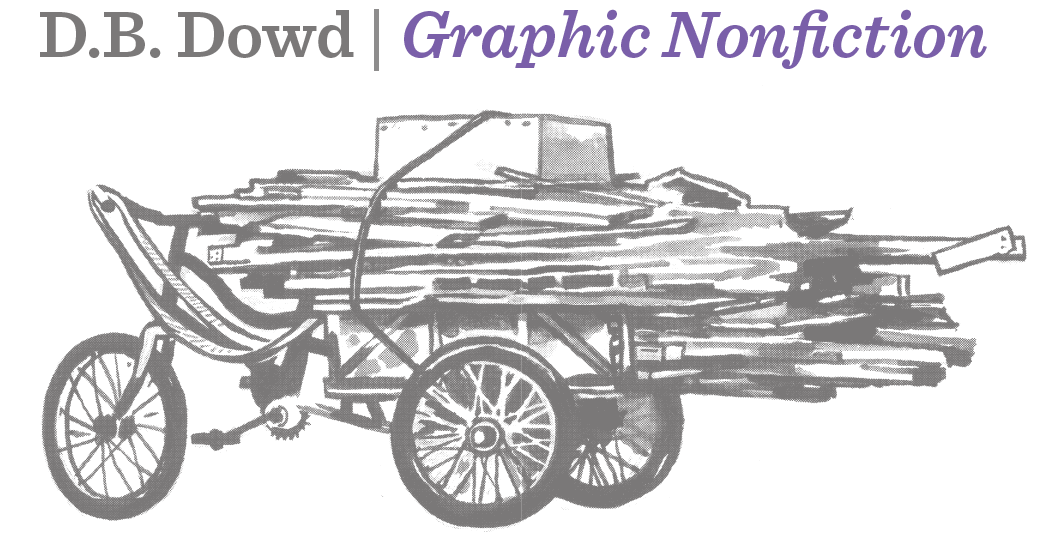Drawing in the Field: Immediacy, Process, and Planning
I am teaching the course I launched in 2023, Advanced Figure Drawing: Studio and Site, integrating studio work with the model with onsite reportage. We’ve had a nice run so far, now rounding the last turn and bringing the course home. As a group we have made useful discoveries about economy, equivalence, pictorial design, and the process of drawing through “mistakes,” not erasing them or heaven forbid avoiding them altogether. Good solid work has been happening.
But now the terms are changing. We have about a month left, and we need to convert our discoveries into a process that retains immediacy but benefits from process and planning. That is, to make something like “finished” works. This is turning out to be a challenge, and today I want to grab that transition and hoist it up in plain view.
The image at the top of this post dates to 2015. Ten years ago! I took my sketchbook and my camping chair to Lulu’s, a landmark Chinese restaurant on Olive in St. Louis County (an area to which residents of the former St. Louis Chinatown, displaced by “urban renewal” for the [first] Busch Stadium, decamped from 1964). I made a series of very informative pencils, knowing that I was composing for a two-page spread. The drawing on the right engaged the transition from the parking lot and the peculiar outbuilding on the right to the edge of the restaurant proper on the left, with the pagoda-like roof. As is often the case, I was fascinated by the sheer crappiness of the wires and lights and posts and signage, etcetera. The lion on the left side was one of two such statues flanking the entrance. I found the lion and the stripes on the empty parking lot echoed yet contrasted with the density on the right page. (I went to draw the site at around 6:00 am so I would not be bothered by or have to explain myself to anyone.)
But the round of pencils was only part of the process. Once I had decided on an approach to framing the spread I had to convert the pencil to a more graphic form. The pencil was a preliminary artifact; it had to supply authoritative information, but required realization to be of any use for a finished thing. Realization, in this case, turned out to inking, executed in wash and full-strength black goauche with white corrections. I avoided wash on the left drawing— the lion and the parking lot—to create something more guttural and elemental.
But the key drawings from the site required supplementing. There were indeed bare trees growing behind Lulu’s but my view was sufficiently obstructed that I decided to draw a stand of trees elsewhere and drop that drawing (which I did not ink) behind the key drawing. I also added the drawing of the taxi and the clumpy mass that appears behind it. The drawing on the right was assembled and edited in Photoshop. I added assorted lettering passages from an alphabet I had built from my own handwriting in Illustrator.
Meanwhile, the image on the left was built in InDesign, and the right hand composite was later placed in the same inDesign file. All of the color was managed digitally in either Photoshop or InDesign.
So the immediacy of the drawing was spread across several episodes: first pencil, then ink, then assembled other elements. The process accommodated editing through subtraction (white correction) redrawing, and the use of digital tools to manage levels of contrast (for example, the trees stayed in pencil; the contrast levels were bumped to give greater definition to the pencil; and they were assigned the dark green line color to keep them from competing with the black and gray. Color fields in green (a range of values) and brick red also played a critical role in establishing value and temperature. That’s a lot of steps to get to a realized spread.
And now I turn to address my students directly: Gang, your final group of works shall involve more than one step. That need not include digital media; It could be as simple as pencil in the field with media added later. Somehow I want you to explicitly engage the problem of realization, accounting for the immediacy of drawing and the contributions of media and process. You must edit from the primary experience, adding, subtracting, and supplementing to add weight and heft.
Below I have pulled a handful of other posts where I explicitly address process and media. Please read and be ready to discuss when we gather. (I will be posting an announcement on Canvas presently.)
Please read The Visual Correspondent with diverse sources. There is a construction site drawing by Mike Hirshon toward the bottom of the page, about which more presently;
Please read An Illustrated Affair, an account of a day spent drawing the wedding of the above-mentioned Mike Hirshon, a former student who has gone on to found the illustration program at the University of Utah;
Please read Onsite Drawing and the Uses of Photography 1, something I wrote as I was wrestling with questions of reference early in my adventures with onsite work now many years ago, but still relevant methinks.
To discuss!

